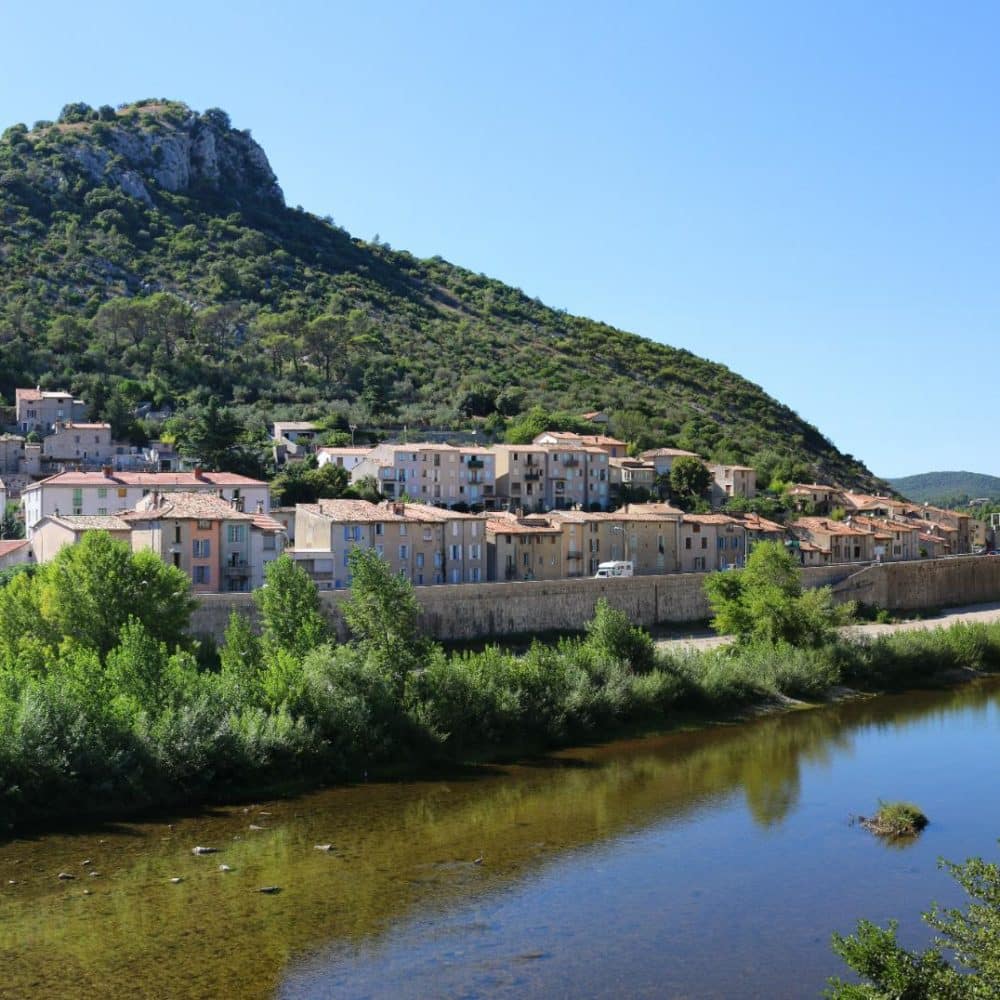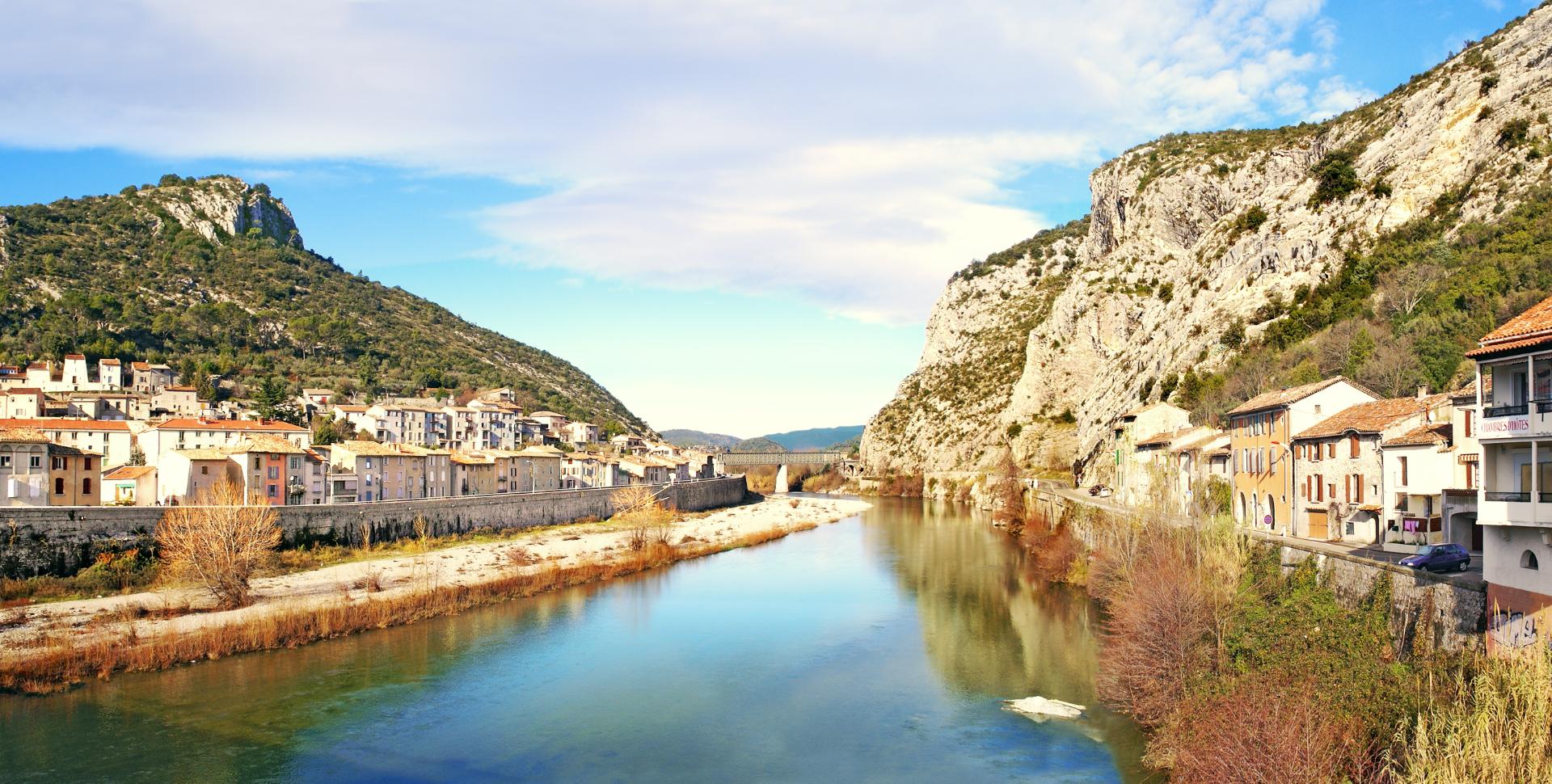Anduze in the Gard near the campsite
Anduze is a picturesque village nestled between two limestone cliffs shared by the Gardon river. Anduze appeals to all lovers of heritage, nature walks and local produce. Stay at our campsite in Anduze and discover magnificent landscapes between sea and mountains, just an hour from Mont Aigoual.
Discover Anduze, at the gateway to the Cévennes!
At the gateway to the Cévennes, Anduze offers a multitude of activities and visits to do during a camping holiday in the Gard. With its parks, historic and architectural heritage and market, you’ll be spoilt for choice!
- The Parc des Cordeliers in Anduze invites you to contemplate and relax. Stroll along the shady paths and discover trees typical of the region, as well as rarer species. Play areas and ponds are a delight for young and old alike.
- Anduze also offers architectural marvels such as the Tour de l’Horloge, built in 1320 and listed as a historic monument. You can also admire the 17th-century church of Saint-Étienne. And don’t miss the Grand Temple, Château Neuf and Tour de Pézène.
- You’ll see many fountains as you visit the town. They played an essential role in the lives of Anduziens before the arrival of the drinking water network. Discover, for example, the pagoda fountain with its colorful, locally-made tiles, the white marble Pradier fountain or the French Revolution bicentenary fountain with its columns in 3 architectural styles.
- And don’t forget to visit the Anduze market, where you can do your shopping, sample local produce or take home souvenirs from your camping vacation in Anduze. The Anduze market is held in the main square on Thursday mornings, and at night on Tuesday evenings during the summer season (from 7pm). Ideal for discovering the local atmosphere and enjoying a bit of fresh air. A flea market on rue du Luxembourg takes place every Sunday morning. It’s a great opportunity for the whole family to stroll around and find the item of your dreams.

What to do in Anduzeand the surrounding area?
Coming to Anduze is also an opportunity to explore its rich historical and architectural heritage! A stroll through the town will take you to discover its castle, towers, religious monuments, numerous fountains and much more.
During your stay at a campsite in Anduze, don’t miss a visit to the Bambouseraie ! A must-see site in the region, follow a guide to discover this superb park with its splendid landscapes. This exceptional botanical garden is a haven of peace for nature lovers. What’s more, children can have fun in the various play areas on site. The Prafrance bamboo grove is 2 kilometers from Anduze.
For an original arrival at La Bambouseraie, take the Cévennes steam train. This authentic train runs between Anduze and Saint Jean du Gard, with a stop at La Bambouseraie in July and August. Along the way, admire the Cévennes countryside and the view of the Gardon canyon.
Another idea for a family outing is a visit to the Trabuc caves, 11 km from Anduze. Spend a magical moment in the heart of this cave , nicknamed the “cave of 100,000 soldiers”. The coolness of the cave is very much appreciated in hot weather, and the opinions are unanimous: its interior is exceptional. This is the largest cave in the Cévennes, and a must-see, just 6 km from Anduze!
Discover the potteries of Anduze, a traditional activity that has survived thanks to the skills of its craftsmen. For the pleasure of your eyes, or to take home a piece of pottery as a souvenir of your stay in Anduze, don’t hesitate to visit the potters. These passionate craftsmen will be delighted to show you their finest creations. Typical Cévennes pottery has been part of Anduze’s history since the Middle Ages, and comes in a variety of forms: crockery, tiles, jars and even drainpipes. The fruit of many legends, Anduze pottery and in particular its vases can be found in many garden vases in Languedoc Roussillon, but also in large gardens in Paris and all over the world! Discover the Anduze vase route through 10 manufacturers who respect local tradition and know-how. You’ll be able to discover the traditions and meet the potters and their history.
If you’re a sporty type or just enjoy a stroll, take a hike on the Peyremale rock. This 2-hour or 7-kilometer hike is an opportunity to discover Anduze’s cultural heritage, including the quays, the pagoda fountain, the church of St Etienne d’Anduze and the Tour de l’Horloge with its sundial showing the signs of the zodiac. A stroll around Peyremal also means discovering its cliffs and, if you’re lucky, spotting bats, which are active between March and October.
Camping in Anduze
For your next vacation in the Gard, take advantage of all Anduze has to offer and opt for a stay at Castel Rose, our campsite in Anduze. We offer a wide range of accommodation, with different types of mobile home to suit all tastes at the best value for money. Would you prefer to stay on a pitch on our campsite? We have a wide choice of pitches for tents, caravans and motorhomes, some with private sanitary facilities. We also offer clean communal sanitary facilities. Staying at our campsite in Anduze is the ideal way to spend a pleasant vacation in nature.
What’s more, you’ll find a host of 4-star services, outdoor activities and entertainment for children and adults. From playgrounds and multisport fields to evening entertainment, there’s something for every holidaymaker to enjoy in the Cévennes.
Take advantage of our aquatic area with swimming pool, suitable for the whole family. What’s more, its ideal location on the banks of the Gardon river means you can take advantage of the 970 m² beach to cool off and have fun as a family, between lazing around and water sports. Between two swims in the river or pool, you can explore Anduze and the many places of interest in the Cévennes.


